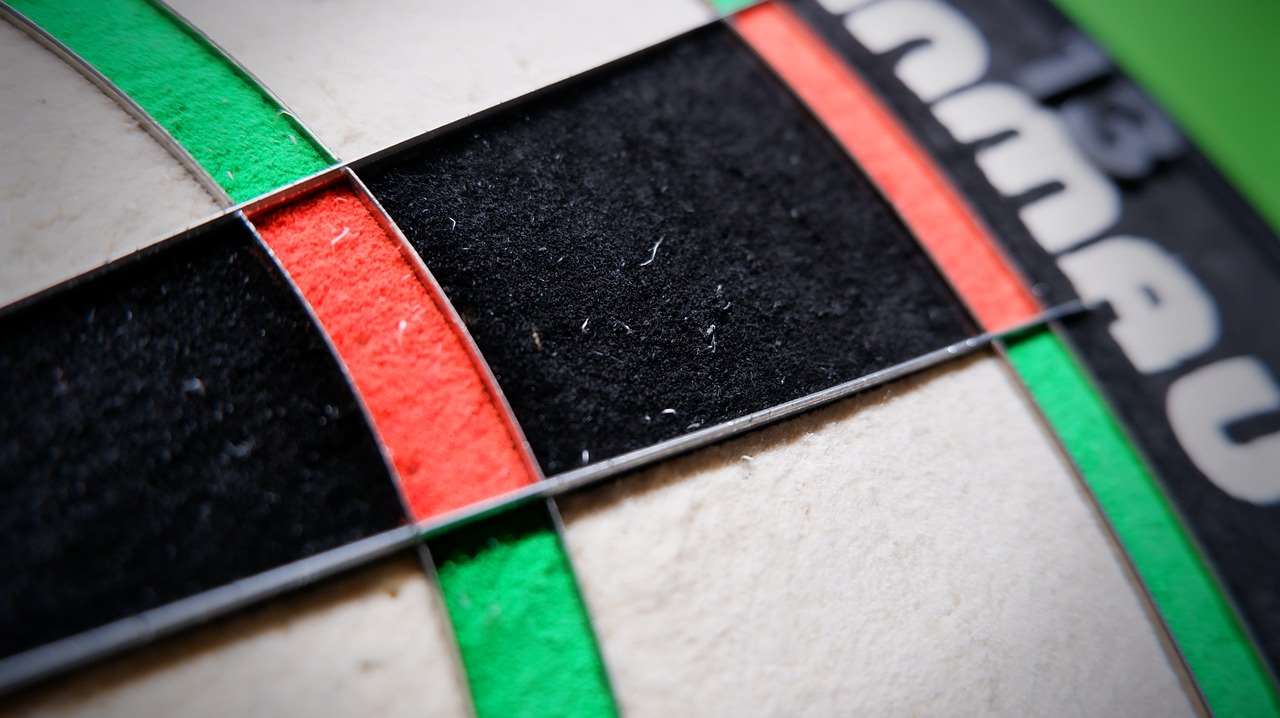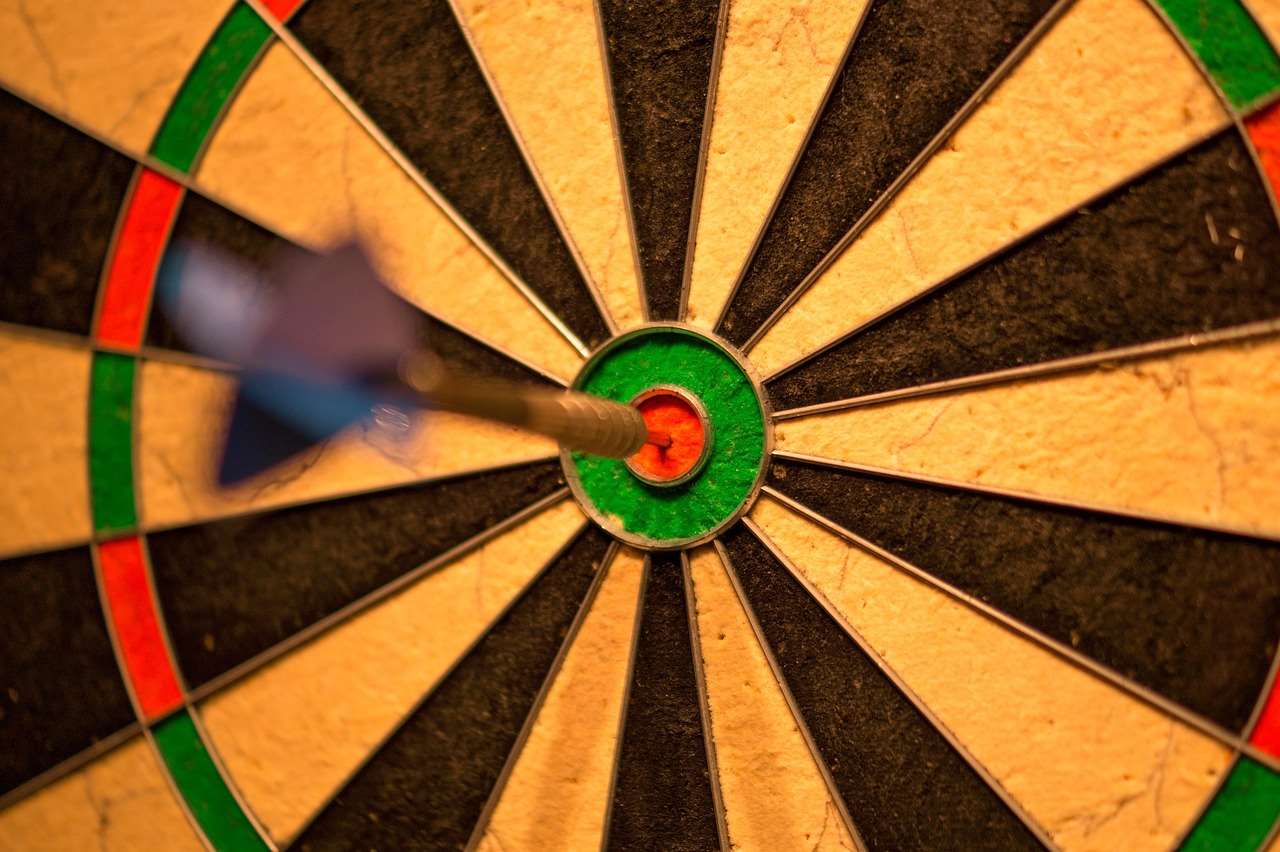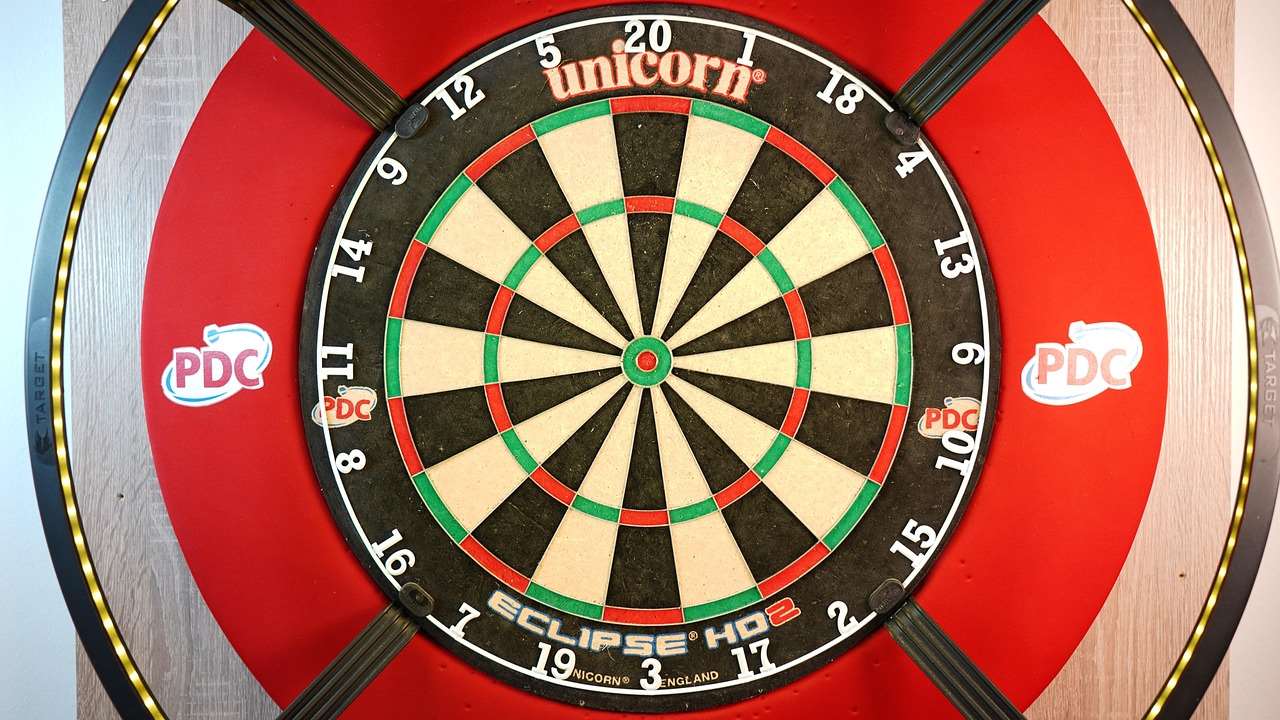For serious players, **darts for competition** demands precision, strategy, and the right equipment; mastering these elements is crucial for success. This article explores everything from dartboard setup and throwing techniques to tournament preparation and mental fortitude, offering a comprehensive guide for aspiring competitive dart players.
⚠️ Still Using Pen & Paper (or a Chalkboard)?! ⚠️
Step into the future! The Dart Counter App handles all the scoring, suggests checkouts, and tracks your stats automatically. It's easier than you think!
Try the Smart Dart Counter App FREE!Ready for an upgrade? Click above!
Elevating Your Game: The Essentials of Darts For Competition
Taking your **darts for competition** game to the next level requires more than just casual practice. It’s about understanding the nuances of the sport, from the equipment you use to the mental game you play. This section will cover the foundational elements essential for any aspiring competitive dart player.

Dartboard Setup: Precision and Accuracy
A correctly set-up dartboard is the foundation of any serious darts game. The height and distance are critical for consistent play. Here’s what you need to know:
- Height: The center of the bullseye should be exactly 5 feet 8 inches (1.73 meters) from the floor.
- Throwing Distance: The oche (throwing line) should be 7 feet 9 1/4 inches (2.37 meters) from the face of the dartboard.
- Material: Sisal fiber dartboards are the standard for competitive play due to their self-healing properties.
- Lighting: Proper lighting is essential. Ensure the dartboard is well-lit without shadows obstructing your view. Consider a dedicated dartboard lighting system.
Ensuring correct dartboard setup is paramount to your improvement; consistent practice on a poorly configured board can reinforce bad habits.
Choosing the Right Darts: Weight, Grip, and Balance
Selecting the right darts is a highly personal process. Experiment with different weights, materials, and grip styles to find what feels most comfortable and allows for consistent release.
- Weight: Darts typically range from 18 to 30 grams. Heavier darts may offer more stability, while lighter darts can be easier to control for some players.
- Material: Tungsten darts are preferred for their density, allowing for a slimmer barrel and tighter groupings. Brass darts are a more affordable option, but tend to be bulkier.
- Grip: Experiment with different grip patterns – knurled, ringed, or smooth – to find the one that provides the best control without slipping.
- Balance: The balance point of the dart can affect its flight. Consider front-weighted, center-weighted, or rear-weighted darts based on your throwing style.
Remember, the best darts are the ones that feel right for you. Don’t be afraid to try out different options before committing to a set.
Mastering the Throw: Technique and Consistency in Darts For Competition
Consistent throwing technique is the key to success in **darts for competition**. This section outlines the fundamentals of a solid throwing motion and provides drills to improve your accuracy.
The Stance: Stability and Balance
Your stance provides the foundation for your throw. A stable and balanced stance allows for consistent weight distribution and reduces unnecessary movement.
- Foot Placement: Position your throwing foot (usually your dominant foot) slightly angled towards the dartboard. Your non-throwing foot should be positioned behind you for balance.
- Weight Distribution: Distribute your weight evenly between both feet. Avoid leaning too far forward or backward.
- Body Alignment: Keep your body relatively still throughout the throw. Minimize swaying or excessive movement.
The Grip: Control and Release
Your grip should be firm enough to maintain control of the dart, but not so tight that it causes tension. Experiment to find the grip that feels most natural and comfortable.
- Finger Placement: Most players use a three- or four-finger grip. Experiment with different finger placements to find what works best for you.
- Grip Pressure: Apply consistent pressure throughout the throw. Avoid squeezing the dart too tightly.
- Release Point: Aim for a smooth and consistent release point. Avoid jerking or snapping your wrist.
Regular practice will help you develop a consistent grip and release.

The Throw: Smoothness and Follow-Through
A smooth, fluid throwing motion is essential for accuracy. Avoid jerky movements and focus on a controlled release.
- Arm Movement: Draw your arm back smoothly, keeping your elbow aligned with the target.
- Follow-Through: Extend your arm fully towards the target after releasing the dart. Maintain your follow-through until the dart hits the board.
- Consistency: Practice your throwing motion repeatedly to develop muscle memory and consistency.
Record yourself throwing darts and analyze your technique. This can help you identify areas for improvement.
Strategic Play: Maximizing Your Score and Mental Fortitude in Darts For Competition
While throwing accuracy is crucial, strategic play and mental toughness are equally important in **darts for competition**. This section explores effective scoring strategies and techniques for maintaining composure under pressure. It also explores the importance of darts culture and community.
Scoring Strategies: The Art of the Checkout
Knowing how to finish a leg is just as important as scoring high. Mastering common checkout combinations can significantly improve your win rate.
- Popular Checkouts: Learn the common checkout combinations, such as 170 (T20, T20, Bullseye), 167 (T20, T19, Bullseye), 164 (T20, T17, Bullseye) and the Double 16 for 32.
- Checkout Charts: Use a checkout chart as a reference guide during practice.
- Practice Under Pressure: Simulate match conditions during practice to get comfortable with checkout routines.
Prioritize practicing your checkouts to become a more well-rounded player. Many professional players rely on Darts Culture And Community Guide knowledge of optimal checkout routes when under pressure.

Mental Game: Staying Calm Under Pressure
The mental aspect of darts is often overlooked, but it’s a critical component of success. Learning to manage pressure and maintain focus can give you a significant edge over your opponents.
- Visualization: Visualize yourself throwing accurately and hitting your targets.
- Positive Self-Talk: Replace negative thoughts with positive affirmations.
- Breathing Techniques: Use deep breathing techniques to calm your nerves and focus your mind.
- Focus on the Process: Concentrate on your technique and routine, rather than the outcome of the game.
Develop a pre-throw routine to help you focus and stay grounded.
Dealing with Distractions and Nerves
Competitive environments can be full of distractions and pressure. Developing strategies for managing these challenges is crucial for maintaining composure and performing at your best.
- Identify Your Triggers: Recognize what situations or thoughts tend to throw you off balance.
- Develop Coping Mechanisms: Practice techniques for managing anxiety and refocusing your attention.
- Accept Imperfection: Understand that mistakes are part of the game. Don’t let a bad throw derail your focus.
Remember, everyone experiences nerves. The key is to learn how to manage them effectively. Consider practicing in simulated competition environments.
Tournament Preparation: Getting Ready For Darts For Competition
Proper preparation is essential for success in **darts for competition**. This section outlines key steps for preparing for tournaments, from practicing effectively to managing travel logistics.
Effective Practice Routines: Maximizing Your Time
Practice is crucial, but it’s important to practice effectively. Focus on quality over quantity and structure your practice sessions to target specific areas for improvement.
- Warm-Up: Start each practice session with a thorough warm-up to loosen your muscles and get your blood flowing.
- Targeted Drills: Focus on specific areas for improvement, such as accuracy, checkout routines, or mental game techniques.
- Match Simulation: Simulate match conditions during practice to get comfortable with the pressure and distractions.
- Track Your Progress: Keep track of your scores and statistics to monitor your progress and identify areas where you need to focus your efforts.
Variety in your practice routine can help keep you engaged and prevent burnout.

Equipment Checklist: Ensuring You’re Ready
Make sure you have all the necessary equipment before heading to a tournament. A well-prepared player is a confident player.
- Darts: Bring multiple sets of darts in case of breakage or damage.
- Flights: Pack plenty of spare flights, as they can easily break or become damaged during play.
- Shafts: Carry extra shafts, as they are also prone to breakage.
- Dartboard Surround: A surround can protect the wall around the dartboard from stray darts.
- Scoreboard: A scoreboard is essential for keeping track of the score during matches.
Having backup equipment ensures you’re prepared for any unexpected situations.
Travel and Logistics: Minimizing Stress
Traveling to tournaments can be stressful, especially if you’re unfamiliar with the location. Planning ahead can help minimize stress and allow you to focus on your game.
- Book Accommodation Early: Secure your accommodation well in advance to ensure you get a good deal and avoid disappointment.
- Plan Your Travel Route: Plan your travel route carefully and allow plenty of time to get to the venue. Consider potential delays or traffic.
- Pack Appropriately: Pack everything you need, including your darts equipment, comfortable clothing, and any medications you require.
- Familiarize Yourself with the Venue: If possible, visit the venue in advance to familiarize yourself with the layout and surroundings.
Proper planning can help you arrive at the tournament feeling relaxed and prepared. Consider looking into Travel Tips For Darts Tournaments for additional information.
Advanced Techniques: Elevating Your Darts For Competition Game
Once you’ve mastered the fundamentals, you can start exploring advanced techniques to further enhance your **darts for competition** game. This section covers some strategies used by professional dart players.
Grouping: Tightening Your Shot Pattern
Grouping refers to the ability to consistently throw darts close together, even if they’re not always in the desired target. Tight groupings indicate consistent throwing mechanics.
- Analyze Your Shot Pattern: Pay attention to where your darts are landing. Are they consistently high, low, left, or right of the target?
- Adjust Your Aim: Make small adjustments to your aim based on your shot pattern.
- Practice Deliberately: Focus on hitting the same spot repeatedly to improve your consistency.
Mental Imagery: Visualizing Success
Mental imagery, also known as visualization, involves creating vivid mental images of yourself performing well. This technique can help boost your confidence and improve your focus.
- Create a Detailed Image: Visualize yourself throwing accurately, hitting your targets, and winning matches.
- Engage Your Senses: Imagine the sights, sounds, and feelings of a successful dart throw.
- Practice Regularly: Incorporate mental imagery into your daily practice routine.

Reading Your Opponent: Strategy and Psychology
Paying attention to your opponent’s body language, throwing patterns, and mental state can give you valuable insights and allow you to adjust your strategy accordingly.
- Observe Their Body Language: Look for signs of nervousness, frustration, or confidence.
- Analyze Their Throwing Patterns: Pay attention to their target selection, accuracy, and speed.
- Capitalize on Their Weaknesses: Exploit any weaknesses you identify in their game.
Remember that reading your opponent is a two-way street. Be mindful of your own body language and try to project confidence and composure.
Conclusion: Achieving Competitive Success in Darts
Mastering **darts for competition** requires dedication, practice, and a strategic approach. From setting up your dartboard correctly and choosing the right equipment to honing your throwing technique and developing mental fortitude, every aspect contributes to your overall success. By incorporating the strategies and techniques outlined in this article, you can significantly improve your game and increase your chances of achieving your competitive goals. Embrace the challenge, stay focused on your goals, and continue refining your skills – the path to darts success awaits! Take the next step in your darts journey and explore Experience Attending Live Darts events to witness top-level competition firsthand.
Hi, I’m Dieter, and I created Dartcounter (Dartcounterapp.com). My motivation wasn’t being a darts expert – quite the opposite! When I first started playing, I loved the game but found keeping accurate scores and tracking stats difficult and distracting.
I figured I couldn’t be the only one struggling with this. So, I decided to build a solution: an easy-to-use application that everyone, no matter their experience level, could use to manage scoring effortlessly.
My goal for Dartcounter was simple: let the app handle the numbers – the scoring, the averages, the stats, even checkout suggestions – so players could focus purely on their throw and enjoying the game. It began as a way to solve my own beginner’s problem, and I’m thrilled it has grown into a helpful tool for the wider darts community.